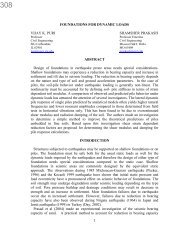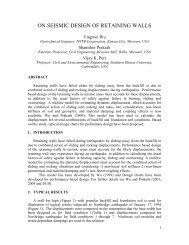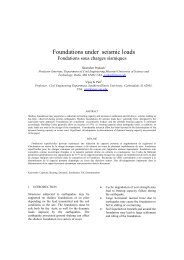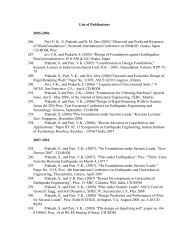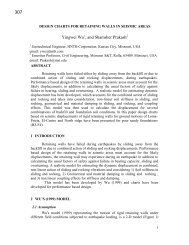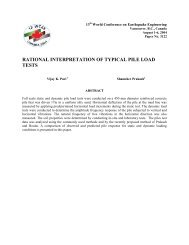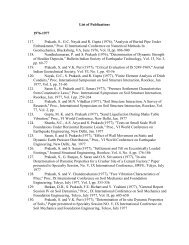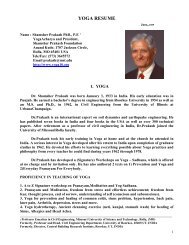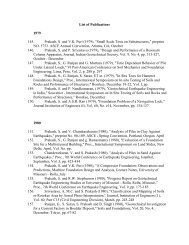Swarm Robots for Autonomous Thrash and Garbage Removal
Swarm Robots for Autonomous Thrash and Garbage Removal
Swarm Robots for Autonomous Thrash and Garbage Removal
You also want an ePaper? Increase the reach of your titles
YUMPU automatically turns print PDFs into web optimized ePapers that Google loves.
KEY FEATURES1. A powerful <strong>and</strong> size efficient electrical board: The main design goal on theelectrical system’s printed circuit board (PCB) is to support all the functionalityrequired by the project while maintaining the required small size of the robots.The board is an Atmega 32 based development board that supports 3 analoginputs, 1 serial port, a wireless module, 8 digital I/O ports, a 7-segment LED, 4PWM generators, <strong>and</strong> a JTAG programming header.2. Wireless communication mechanism between agents: A mechanism mustbe provided <strong>for</strong> the agents to communicate among with each other throughwireless messages. This will allow flexibility <strong>and</strong> abstraction of computingpower to an external computer machine <strong>and</strong> allows the agents to focus only onexecuting behaviors rather than computing locally what to do next. Thispromotes loose coupling behaviors <strong>and</strong> dynamic programming.3. Visual recognition algorithms <strong>for</strong> the agent location, identity <strong>and</strong> facingdirection: Algorithms to analyze pictures taken from a top view camera to anarea were the agents are present are necessary. Such technique provides realtimetracking of robot location, identity, <strong>and</strong> facing direction.4. <strong>Autonomous</strong> navigation from visual recognition feedback <strong>and</strong> wirelesscommunication: Each robot will be provided limited visual in<strong>for</strong>mationwirelessly from top-view camera <strong>for</strong> on-board processing. Each robot will usethis in<strong>for</strong>mation, along with other on-robot sensors, to navigate around the robotworld, trying to determine her relative location, to obtain her direction ofmotion, <strong>and</strong> to ascertain her next movement.5. <strong>Autonomous</strong> surrounding awareness from visual feedback <strong>and</strong> wirelesscommunication: By querying the visual algorithms, a robot will find theposition of obstacles <strong>and</strong> other agents, with respect to its position, <strong>and</strong> willautonomously determine her next action.6. <strong>Autonomous</strong> artificial intelligence tasks executions system: An agent mustbe able to complete a given task. The task is described as two sets, one set ofrules <strong>and</strong> one of goals. Each rule can tell the robot to match location withobjects or to behave in a certain manner. The reaching of a goal will signal thecompletion of the task. By integrating the visual algorithms <strong>and</strong> a task, thesystem can interact with the robot autonomously <strong>and</strong> tell her when the goal isachieved <strong>and</strong> also provide other feedback that could help the agent to completethe task.





